-
Posts
966 -
Joined
-
Last visited
Content Type
Profiles
Forums
Gallery
Events
Posts posted by Moonbug
-
-
Hehe... You guys said "time line".... ;-)
Don't think I've ever had a time line pan out as planned! Good thing it's all about the process and not the finish line.
Nice smooth work Adrieke!
-Bug
-
I wish I had better advice, but I had a very difficult time matching the hull to the keel. What I ended up doing was notching out the hull and thinning out the keel. That wasn't a correct answer though, more of a compromise fix at the time.
I would just recommended dry fitting it and trying to line it up as cleanly as possibly. You probably won't start thinning until area two. Just remember you can always take away easier than filling.
Bug
-
Nice work Russ. Good to catch up on your build(s) again.
- Bug
-
Kostas! Glad you re-created your SJN build here. I enjoyed following your build while I was constructing my San Juan so it's glad to see your progress again. Very clean, nice work!
- Bug
-
Pictures came through fine. Nice patient work, looks great.
- Bug
-
Some shots of details including the cabins and below decks.
The rest of the finished shots can be found in the Swift gallery.
- cdogg, Griffon, GrandpaPhil and 1 other
-
 4
4
-
- egkb and GrandpaPhil
-
 2
2
-
-
This kit is where I came up with my "fake lathe" method of creating barrels. I put a dowel into my drill and mount it in an anvil vice. When I tighten the vice on this particular drill, it somehow squeezes it just enough to keep the speed consistent. I then use both sandpaper and pin files to create the barrel shapes. I then use a miniature mitre saw to cut off the barrel and do the finishing sanding.
I then score the barrels with one of the many X-acto blades where I've accidentally broken the tip off.
I stain it, then I create the black barrel strips out of electrical tape that is super glued in place. The electrical tape actually works quite well as long as it is stretched the correct amount and held in place by hand until it dries completely.
These are the barrels and packages that I created for below decks. The bags of wheat (or whatever they might be) are made from canvas pieces filled with balsa wood that is carved and sanded to the shape I want.
Finally a captain's desk.
The desk is taken directly from Mastini's book "Ship Modeling Simplified" The ink pot and pen are created from a walnut carving along with a tiny piece of paper. The sextant is soldered from pieces of brass as well as a couple of sewing pins.
-
-
I get board with some of the bits of the ship, so I start messing around with details.
I wanted to add some extra features to the lower decks, but I also wanted to be able to see those details. This kit has permanent deck houses. So I devised a plan in which a viewer could remove and replace the deck houses.The doors are framed with thin cut strips of mahogany with mitre cuts. They're mounted with frames made from brass so that they can be opened and closed.
I mounted pins on the bottom of the deckhouses, then I drilled corresponding holes into the deck access pieces.
-
-
Because of the delicate nature of the hull planking, I used several layers of tung oil and then lacquered with polyurethane before I started working on treenails for the hull.
I used strips of painters tape to line up where I wanted the treenails. This also had the benefit of preventing splintering of the hull planking when I drilled.
My treenails are .5 mm pencil lead. I poked the pencil lead into the holes then snapped them off. I then sanded down very gently and got a decent end result. The process actually went relatively quickly. Not the exact look I was going for, but it came out ok and was an interesting experiment.
-
This is better lighting to show the color of the oak stain I used. It also shows the mitre'd borders for deck access. At this point the bulwarks have been added.
It was very beneficial for me to mount and glue the bulwarks before I planked the ship. This greatly helped me even out the hull.
I planked and sanded the hull. The hull is double planked. It was super important to get the sanding and shaping done properly on the first layer of planking because the second layer of planking is very, very thin and not super high quality wood. I used quite a bit of filler and re-sanded several times using nothing more harsh than 200 to 400 grit paper.
Were I to do the ship again, I would likely have planked it with aftermarket wood of better quality.
-
I used quite a bit of extra wood on this kit. Because it seemed a little flimsy out of the box, I decided it would be to my benefit to overbuild it a little bit then put in some extra work on the sanding shaping end. In particular the planking strips were thinner than I would have liked.
I cut out additional false deck solid pieces out of .5 mm plywood. I then planked these decks with aftermarket strips of wood. Not 100% sure what kind of wood this ended up being, I want to say basswood. It actually ended up being a little softer than I would have liked - so had I to do it again I would use walnut of the like.
I stained the deck with a softer color. My treenails are made from sewing pins chopped and sanded. Once again, a lesson learned I would probably do a "drill and fill" method if I were to do it again.
For the main hull, I once again cut out an additional false deck and measured and drew in exactly where my deck strips would go. This helped tremendously and allowed me to cut and place the deck planks efficiently and relatively quickly.
This is a broken piece of the bulkheads and the head of the ship and it needed to be repaired after the bulkheads and deck were placed.
After drawing in the main deck planking, I mounted the deck. This is where the false deck really came in handy - I was able to hold it in place and shape it exactly how I sanded all the bulwarks.
The thicker strips I used for the deck allowed me to shape easily and gave me extra sanding room.
I then stained my main deck a light oak stain.
-
Hello all. In the interest of current Swift and Virginia Pilot boat type builds being conducted currently, I've decided to recreate my build log of the AL Swift kit that was lost in the great crash of MSW 1.0. Hopefully it'll help some of the folks along with their own builds.
I'll do my best to provide the information I can based on memory, but in all fairness this may end up just being a bunch of photos. ;p~
To the moderators - hope this is ok since I already have some completed photos of the Swift in the gallery. Obviously if I'm stepping on some of the rules please let me know and act accordingly. :-)
Here are the initial shots of the kit.
Although this was a very enjoyable kit to build, I found that unlike my San Juan Nepomuceno this kit had quite a few warped and messed up parts.
I had to straighten out the keel quite a bit. First I soaked and weighted the keel and bulkheads. Then I inserted balsa wood blocks at the front and rear and lined up all the bulwarks by inserted dowels that were cut to match the exact distance between each bulkhead. I measured that distance dead center at the keel to ensure accuracy.
-
Nice work, much improved. That's going to pay big dividends when you start planking the hull!
- Bug
-
Hey Shawn, I edited with the pictures, did they come through?
-
Hey Shawn,
I totally believe how twisted it was before! When I got my Santa Maria kit, the bulwarks were so warped they had split in two.
Back to the swift - my recommendation would be to try and get out as much of the warping as possible before you try and mount the deck. I think the extra work will pay off.
Here are a couple of pictures of how I got some of the warp out of the front of my build.
I used some extra dowels cut to the exact length of the keel and spread them out to the bulwarks.
- Bug
-
Impressive work. What did you use to age / patina the hinges?
-Bug
-
Shawn,
Adding the blocks close to the keel helps a lot. It does add a bit more sanding and evening out if course.
I also used balsa for mine to ease the process. You can usually pick up blocks of it pretty cheaply at most mainstream craft or hobby stores.
-Bug
-
Always good seeing another Swift! I straightened my Swift keel by soaking, then filling in blocks between the bulwarks.
Have fun with the build!
-Bug
-
I can't bring myself to paint... Dark stain, sure. Paint... Not so much.
-Bug
-
Doing a little bit of work and watching the NFL Playoffs. I'm a pretty crazy 49ers fan, so I'll be setting the SM aside when that came comes on...
Like anything else with the Santa Maria there seems to be a variety of speculation regarding pinrails, cleats and the like. I've had to scan the rigging over and over to try and figure out where these fixtures would have been.
I've also been trying to speculate whether or not the belaying pins are more traditional looking (as they are with more modern ships) or whether they may have been more primitive in nature like some of the cleats appear to be.
So, like the rest of the model I've looked at many of the builds and references that are our there and then pressed on with what I think works best while maintaining a credible level of accuracy.
I used a 4mm x 4mm piece of walnut and bevelled the top edges. I've stayed away from much ornamentation on this build because I truly believe the Santa Maria had very little. However, I wanted to include a little bit of craftsmanship that I think every vessel would have likely had. So, I used one of my mini pin-files (which sounds redundant) to notch out the top of the posts.
I used a 1mm thick 5mm wide piece of walnut and sanded it at a curve for the rail portion of the piece. I then notched out both the posts and rail to give them a nice tight fit. After staining the entire thing in "Kona" colored stain (to match the weathering I've done on the rest of the ship) I put them all together with the belaying pins.
Although it's not clearly seen here, I mounted the entire piece in the same method that I've done railings and stanchions - which is to drill and mount pins in the bottom of the posts, drill corresponding holes in the deck, then mount the piece with a touch of CVA glue. It's always a challenge come rigging time to get these pieces to hold well once the running rigging is attached and pulled tight.
- Vivian Galad, egkb, canoe21 and 1 other
-
 4
4



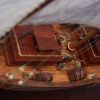
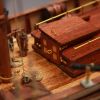
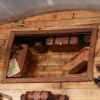
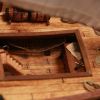
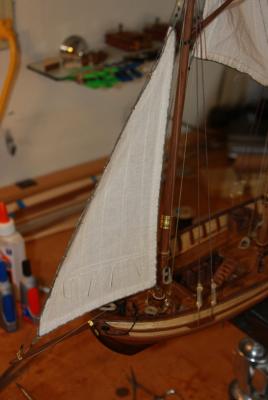
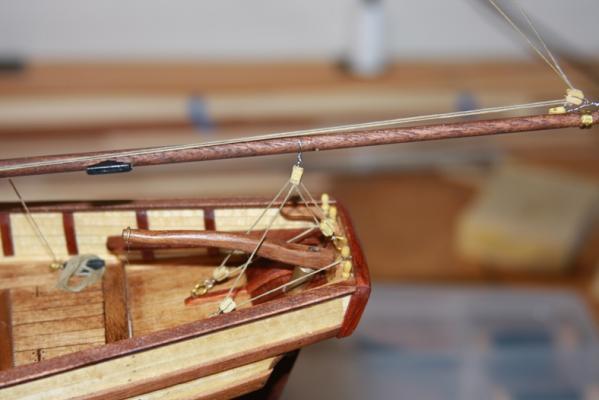
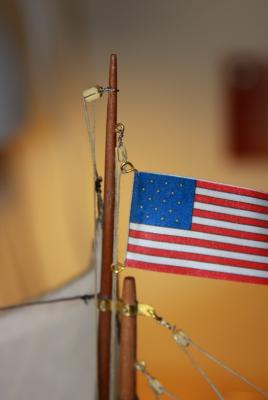
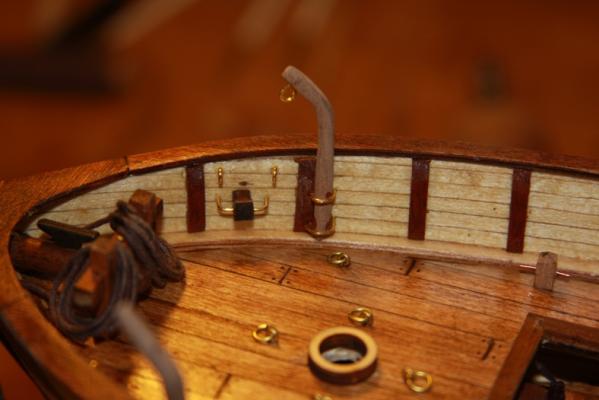
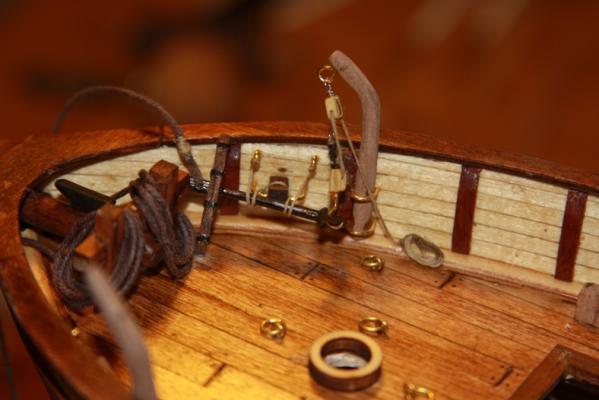
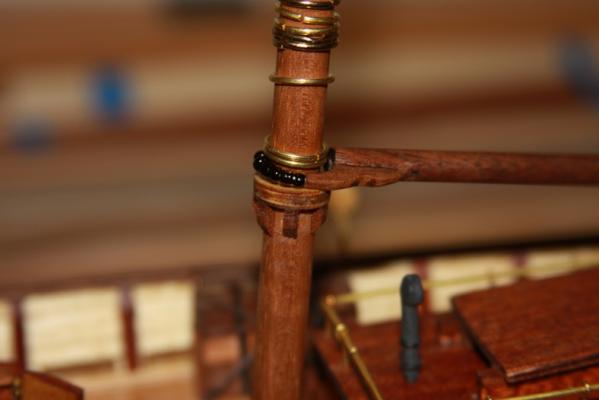
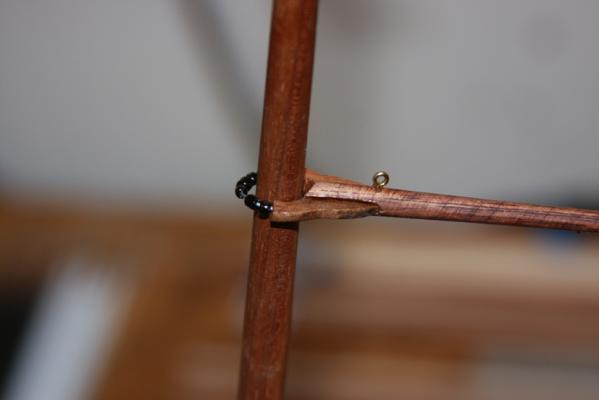
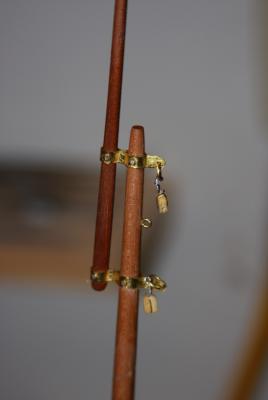
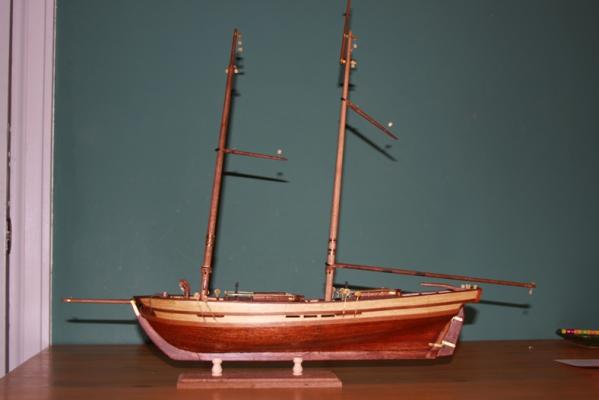
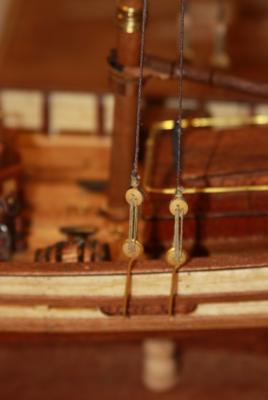
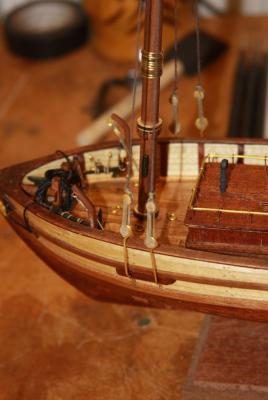
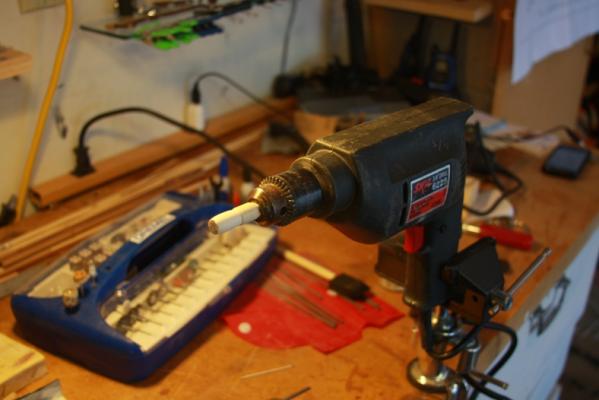
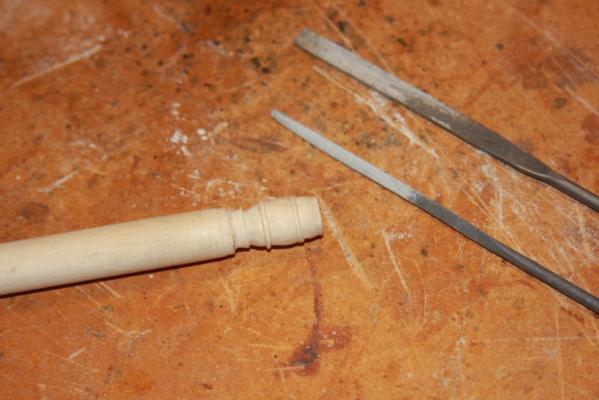
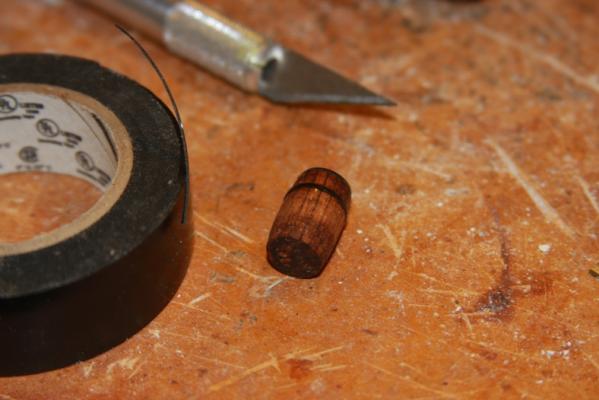
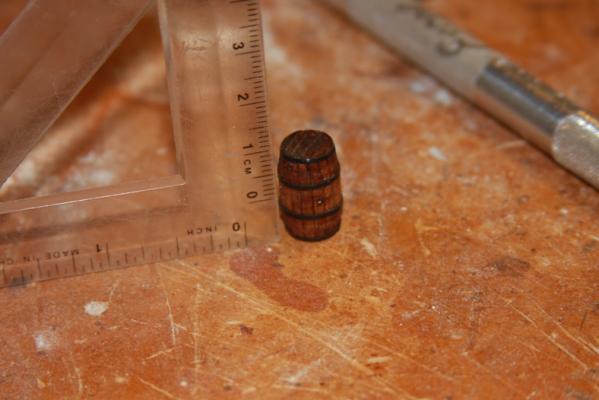
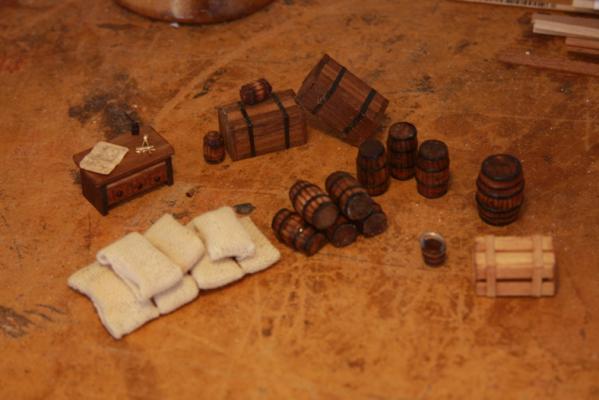
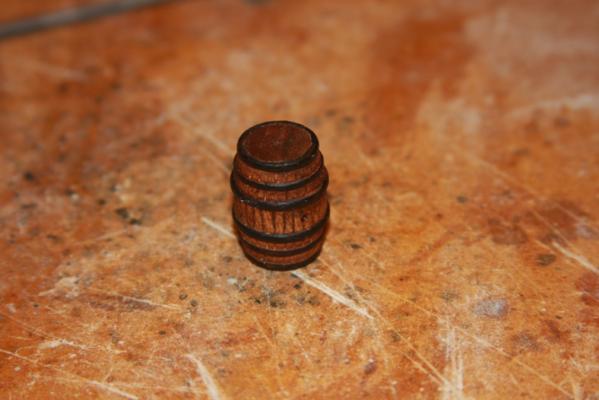
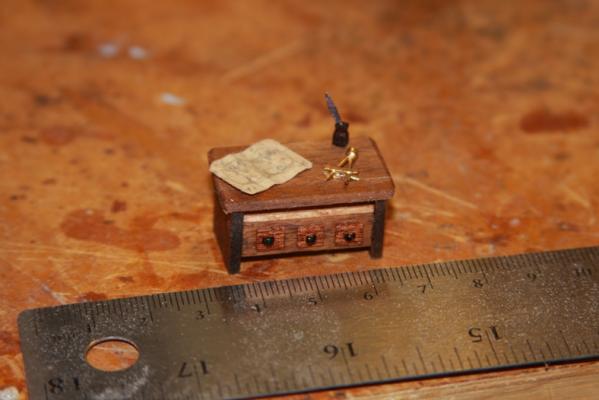
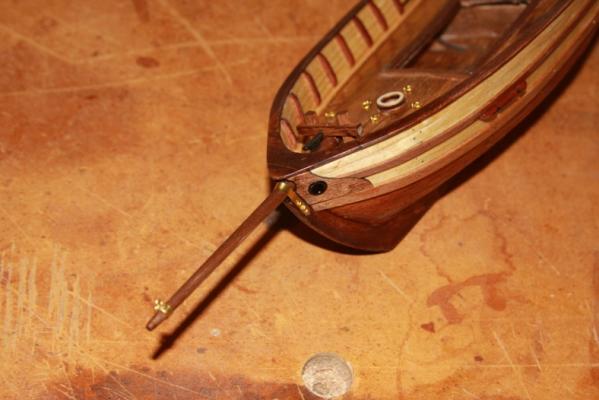

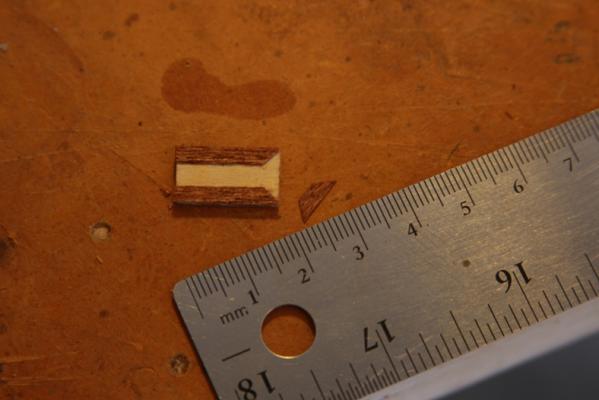
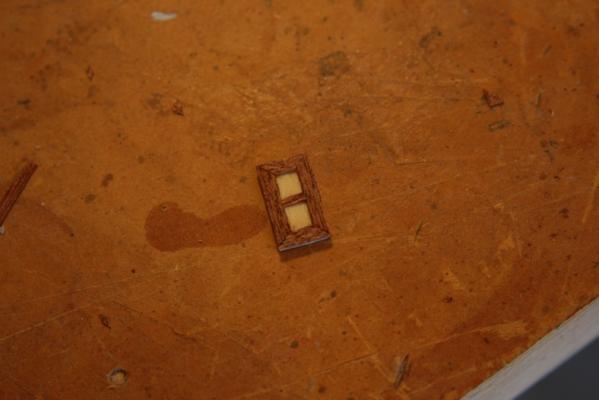
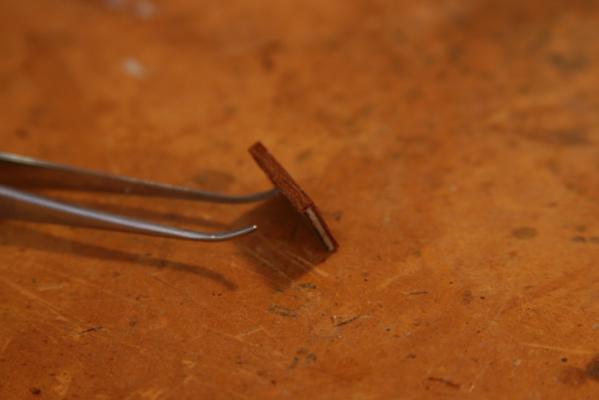
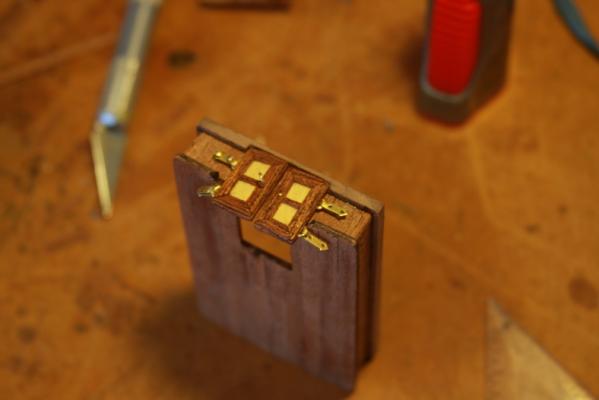
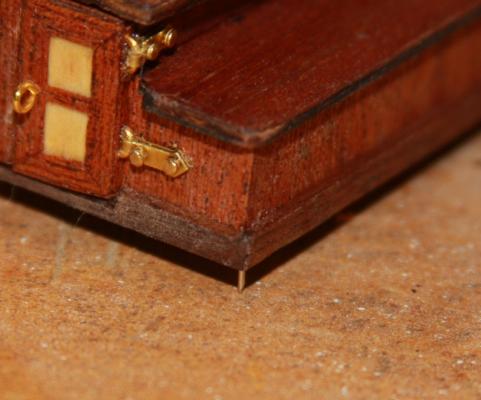

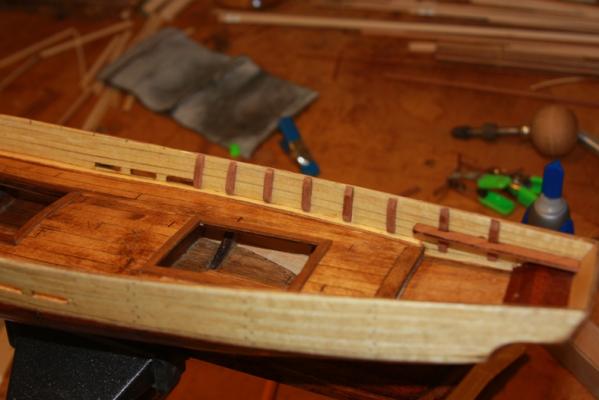
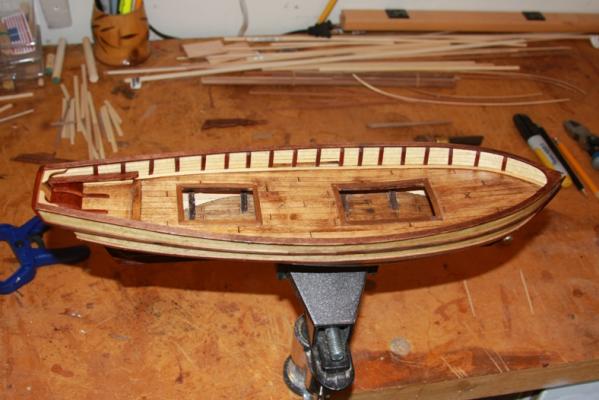
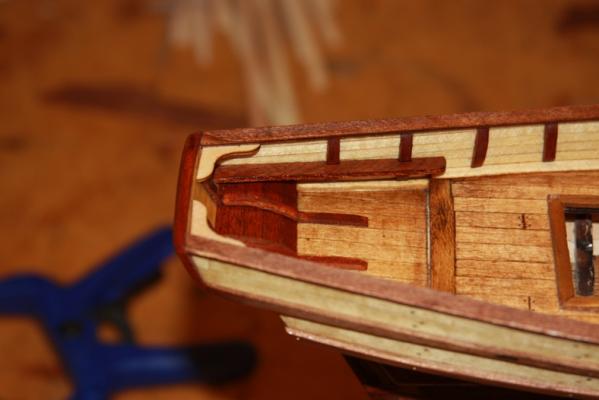
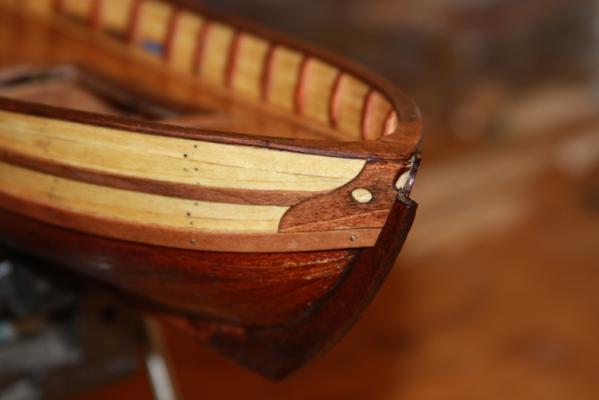
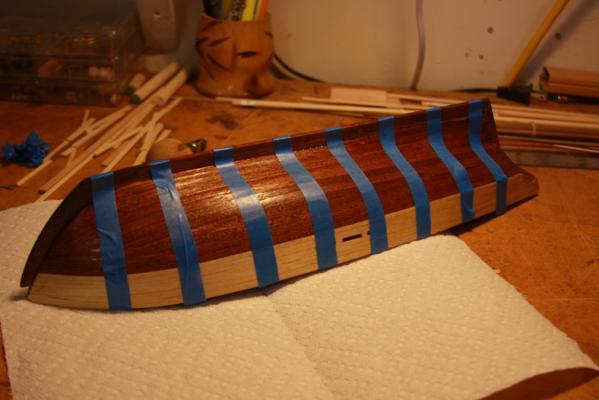
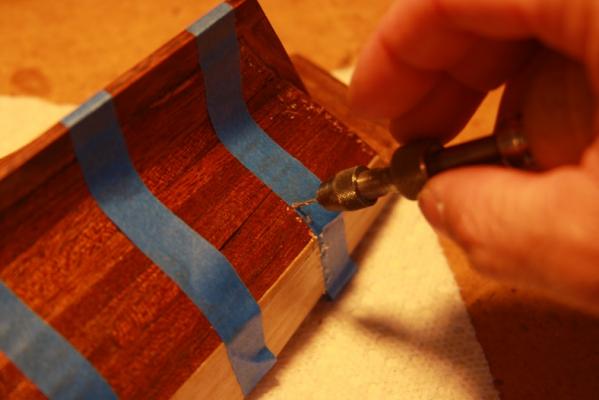
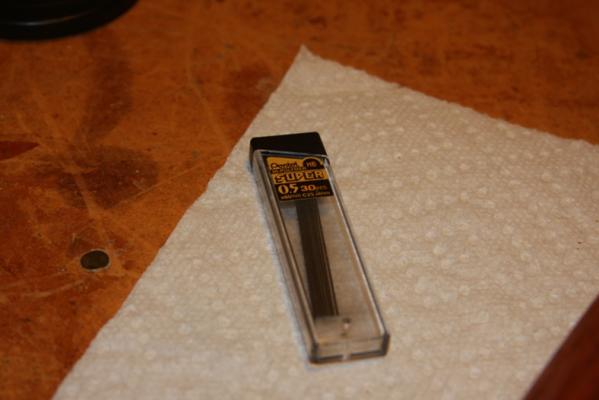
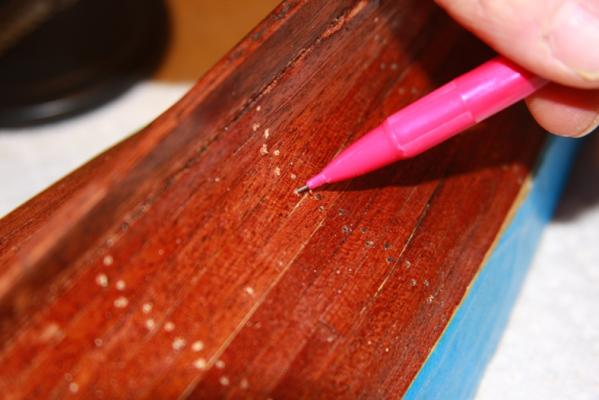
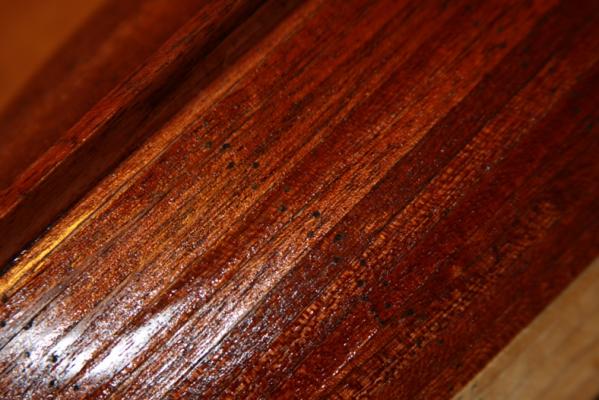

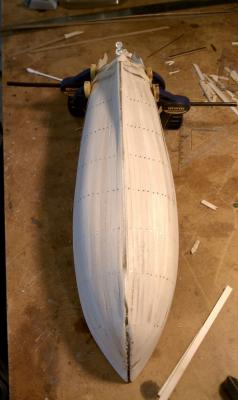
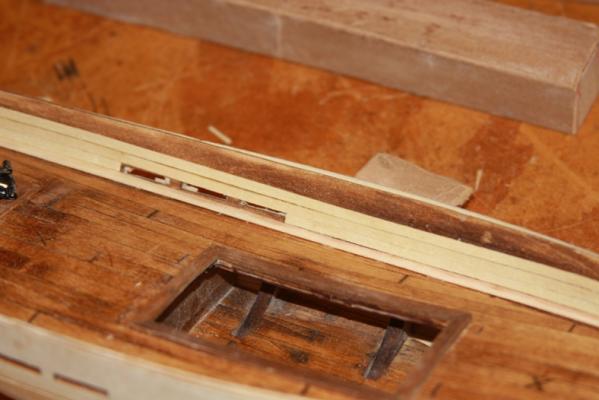
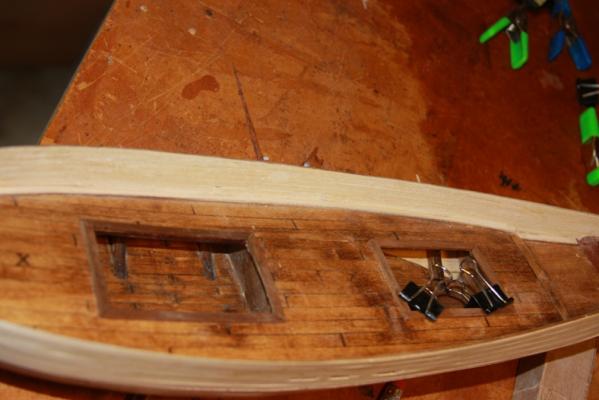
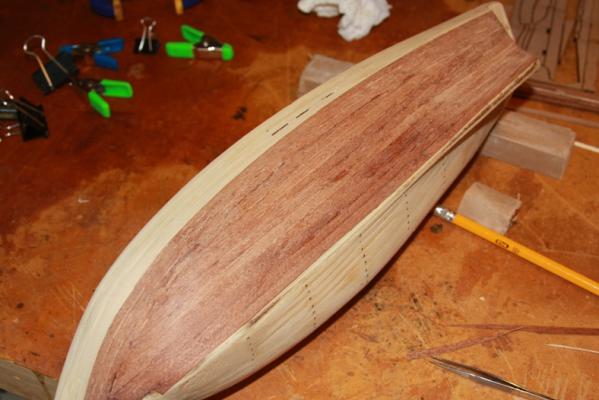
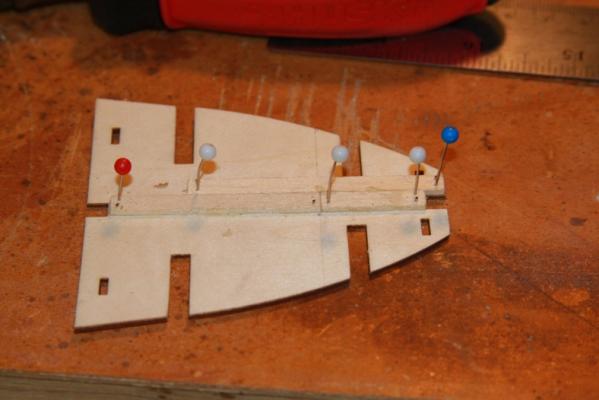
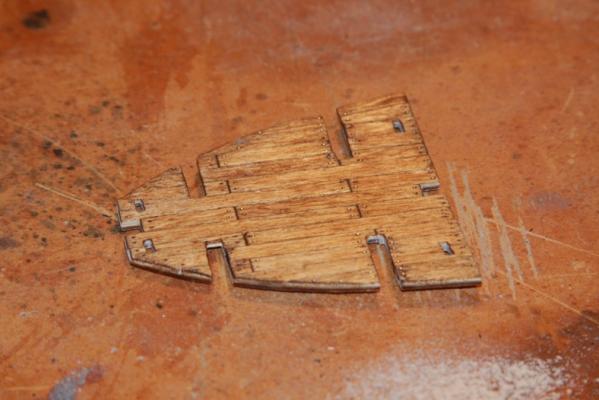
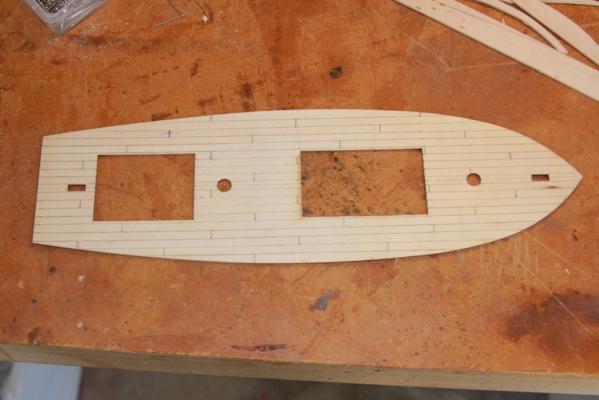

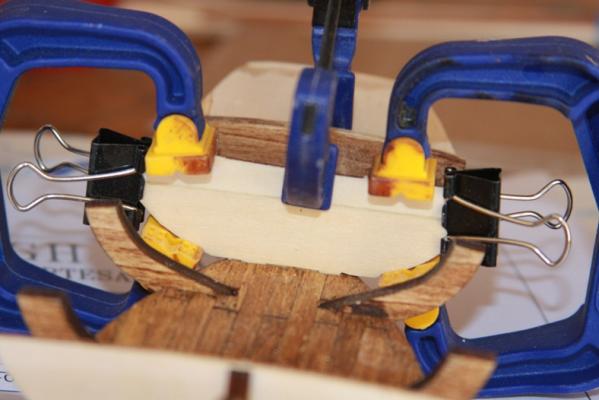
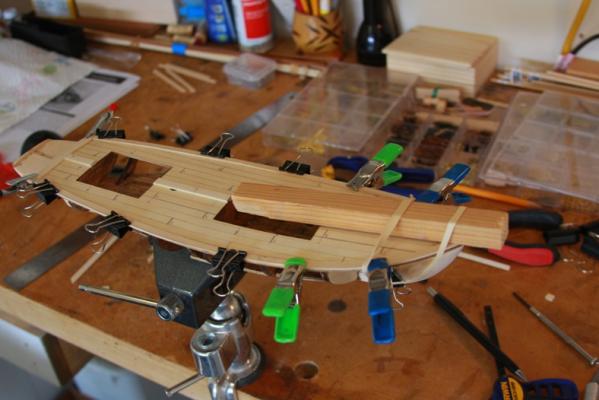
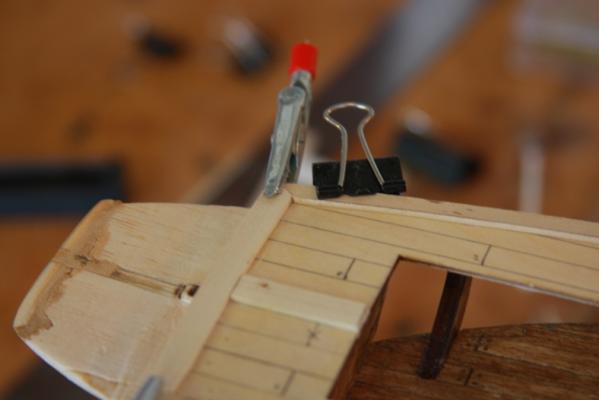
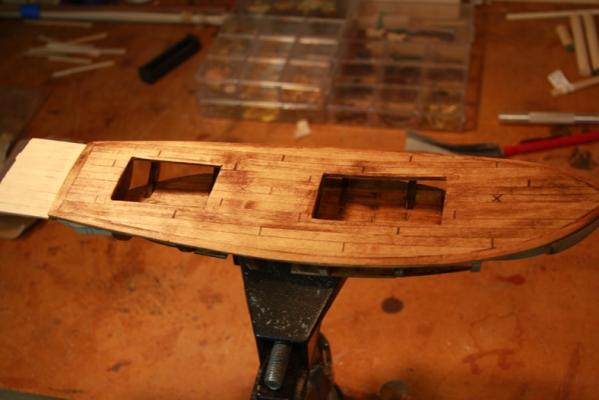
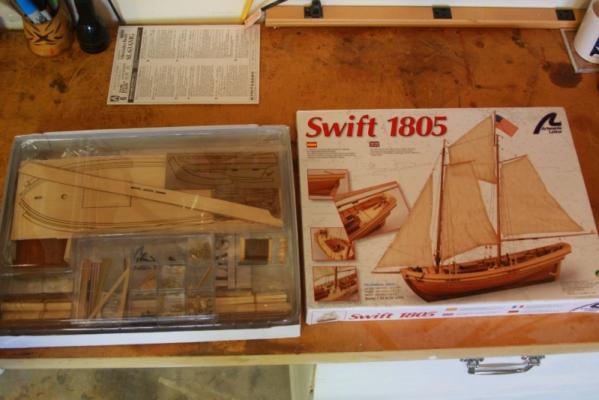
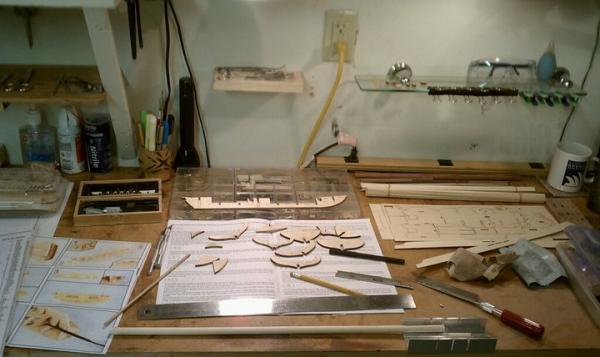
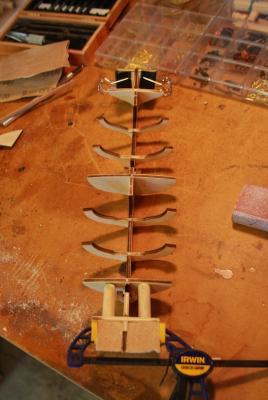
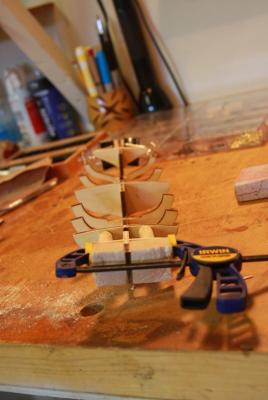
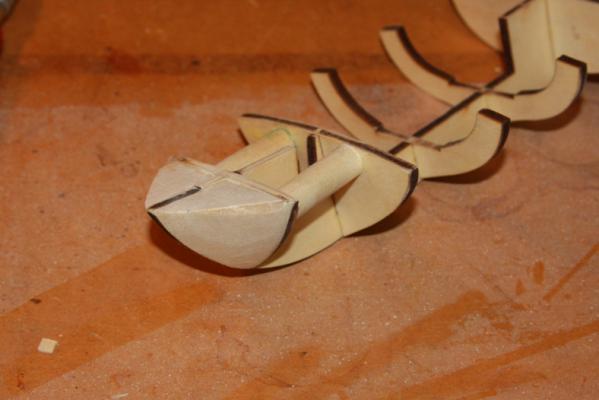
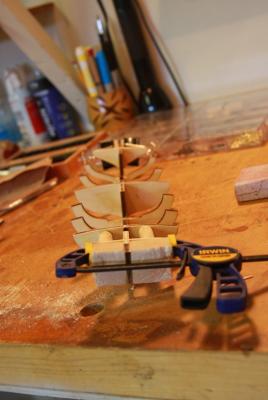
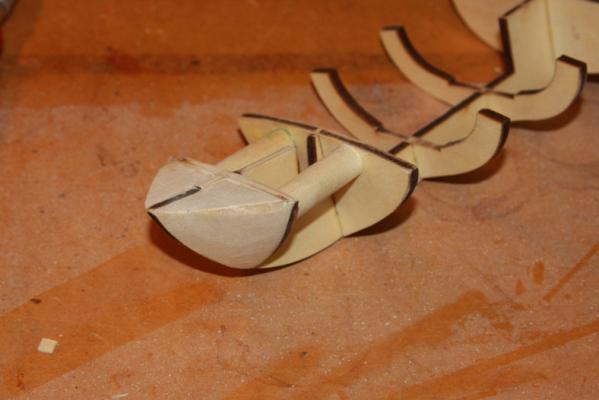
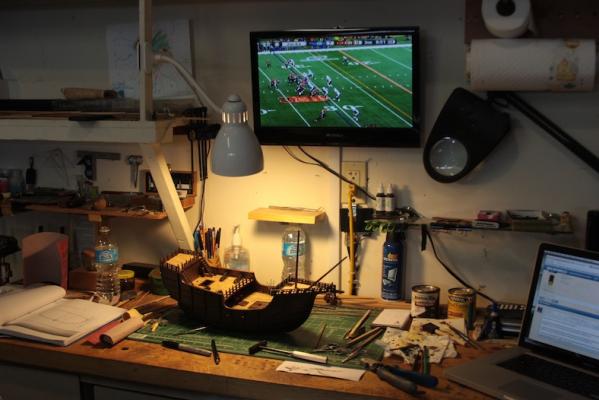
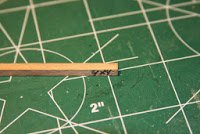
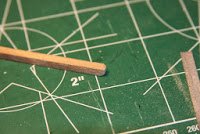
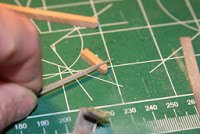

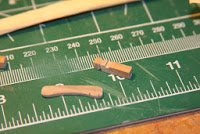
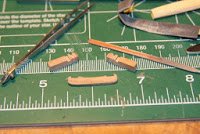
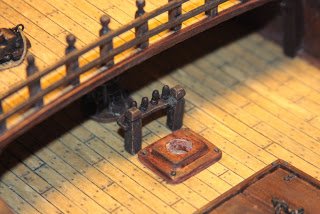
Swift by Moonbug - FINISHED - Artesania Latina - recreated build log
in - Kit build logs for subjects built from 1801 - 1850
Posted
Thanks Peter and Eamonn for checking out my build.
I very much appreciate the comments!
- Bug